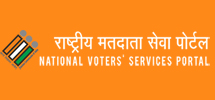Menu
- Home
- Embassy
- Consular
- Book Consular Appointment Online
- General Information
- Passport Services
- Miscellaneous Services
- When to Update or Reissue OCI
- Overseas Citizen of India (OCI)
- Visa Services
- e Tourist Visa (eTV)
- Download Application Forms
- Apostille of Indian Documents
- Renunciation of Indian Nationality/Citizenship
- Registration of Indian Nationals
- Deaths of Indian citizens in Poland
- ICWF
- NPS for NRIs
- Advisory for Indian business community Beware of Amended Payment Instructions
- MADAD - MEA in aid of Diaspora in Distress
- Advisory: Refund of Visa Fee
- FAQ-Marriages of Indian Women
- Bilateral Relations
- Culture/Tourism
- Education
- Commercial
- Media
- Notice Board
- Tenders

















